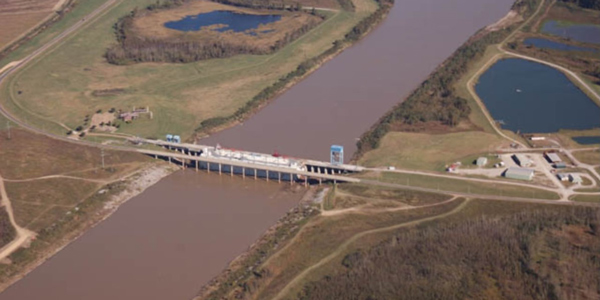By Amanda Durish Cook
The longstanding disagreement over how Entergy once equalized production costs among its operating companies was at the center of two FERC decisions last week, with the commission upholding opinions from two administrative law judges pertaining to a seven-month period of bandwidth calculations from 2005.
The allocation of production costs from 2005 to 2015 among Entergy’s half-dozen operating companies under its multistate system agreement has been a source of disagreement for a decade. Before 2015, the companies functioned as one system, although each had different operating costs. Under the arrangement, Entergy’s low-cost operating companies made payments to the highest-cost company in the system using a “bandwidth” remedy that ensured no operating company had production costs more than 11% above or below the system average.
Regulators in each state where Entergy operates have regularly challenged the annual bandwidth filings, with the Louisiana Public Service Commission long contending that the company’s bandwidth payment calculation was plagued by inconsistencies. (See FERC Affirms Ruling Favoring Entergy Bandwidth Calculation.)
In the first order issued Thursday, FERC affirmed a presiding ALJ’s 2016 finding that interest on the 2005 bandwidth period should begin to accrue starting on June 1, 2006, instead of on June 1, 2005, the first day of a test period, as the Louisiana Public Service Commission had argued (EL01-88-015).
The commission also sided with the judge that Entergy Louisiana should exclude most of its net operating loss accumulated deferred income tax (ADIT) from the bandwidth calculation because it stems from a $1.8 billion tax deduction associated with above-market value energy purchases from a long-term contract with the Vidalia hydroelectric power station ending in 2031. The Vidalia tax deduction was properly excluded from the bandwidth formula to “avoid shifting tax burdens and benefits” to other Entergy operating companies, FERC said. The Louisiana PSC had argued that Entergy Louisiana’s net operating loss ADIT is not a tax savings and should be included in the bandwidth formula.
FERC also agreed that Entergy did not properly account for three regulatory asset deferrals in the 2005 bandwidth calculation and ordered the company to make corrections by switching the deferrals to bandwidth-eligible accounts. The commission confirmed that Entergy should calculate the impact of those accounting changes and make a new compliance filing within 60 days.
In the second order Thursday, FERC affirmed another ALJ’s ruling that Entergy had already addressed the question of how 2005 bandwidth calculations should be handled. The commission said Entergy can use its 2006 compliance filing on bandwidth calculations, which FERC accepted in 2007 (EL01-88-017).
Entergy had questioned whether it could apply its 2006 filing for the bandwidth formula calculation to the seven-month period of bandwidth calculations in 2005 after the Louisiana PSC argued that the 2006 filing was not the properly filed rate for 2005 and could not accommodate a seven-month remedy, as it was designed for an annual calculation. FERC said the Louisiana PSC’s argument amounted to a “collateral attack” on its prior rulings in the Entergy bandwidth calculations.
However, FERC disagreed with the judge that the bandwidth formula used for 2005 must “contain all amendments that have been made to the formula in subsequent years.”




